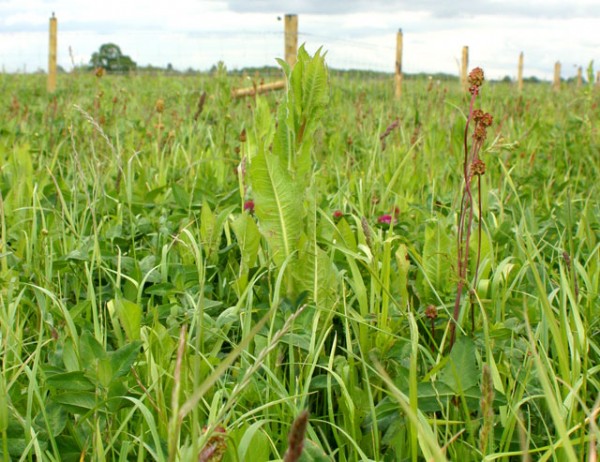

Why the diverse ley system of rotational farming has lasted for 200 years.
British novelist L.P. Hartley famously wrote that, ‘The past is a foreign country; they do things differently there.’ But not when it comes to farming with diverse leys. This is a system that has stood the test of time, having been at the centre of UK agriculture for the past two centuries.
So what is it about diverse leys that has made them last for so long, and what makes the ley farming system a solution for many of the problems facing today’s farmers?
We are talking here about grass leys that are the basis for farming rotation and combine completely different species rather than varieties of the same species. A herbal ley is a good example of a diverse ley but this is by no means the only mixture of plants that can be used.
Lasting between 3-5 years, diverse herbal leys are used for livestock fodder and to build soil quality for the cash crops that nearly always follow these temporary leys.
Back in 234 BC Cato said that ‘farmers should have a low cost of production, be a seller and not a buyer.’ It’s such a simple and logical statement with which most farmers would struggle to disagree. But how far from this ideal have many travelled? How much money do we spend on inputs, bought in feed, pesticides, fertilisers? The increasing costs of production has caused a big problem for farmers but it’s a problem, like the solution, that is by no means new.
In the eighteenth century, agricultural writer Arthur Young rode horseback through Britain recording cropping and livestock production in different regions. He wrote about chicory, sainfoin and burnet, all the plants we are becoming interested in once again.
Then came Robert Elliot (1837 -1914), a pioneering farmer who saw that agriculture was unprofitable, depressed and in need of change. There was no money in growing arable crops because of cheap cereals being imported into the country. A lot of his land was poor soil on the Scottish borders near Kelso. So he looked beyond the idea that all grasses are the same and realised there were huge differences, particularly in the depth of their roots structures. He was the first person to identify the imprtance of grasses, clovers and herbs and to use herbal leys in the sense that we know them today. He wrote a wonderful book called ‘The Clifton Park Farming System’ which detailed the system he had developed using deep rooting four year leys at the centre of a rotation to boost self sufficiency, improve soil fertility and provide low cost forage. Ultimately his aim was to increase profitability. What he said is as relevant today as it was then, because once more there is too much cheap cereal in the marketplace and farmers are struggling, needing to become more profitable.
William Lamin was a Nottinghamshire farmer on sandy land. ‘It’s like throwing money away putting ryegrass on dry land,’ he observed, noting how the plant’s shallow roots, unable to reach moisture, just do not grow. Lamin’s father thought he was mad to even try to farm this land. But then Lamin read Elliot’s book and wrote his own version, describing how the roots of the chicory and cocksfoot he grew were so long they ‘would be tickling the miners ears below the ground.’
Frank Newman Turner was around in the same era and he advocated ‘health from the soil up’ and described herbal leys as ‘a fertiliser merchant, a feed manufacturer and a vet, all in one’, summing up the value the plants gave to his soil, to the health of his animals and the food he produced.
As an ecologist during WWII Sir George Stapleton understood the importance of grassland and the effect it would have on the nation at a time when it was struggling to feed itself. Well known for setting up the Welsh Plant Breeding Station at Aberystwyth, he was another advocate of multi-species swards.
There are plenty of modern equivalents to Elliot, Lamin et al. A former case study Lyndon Edwards in Monmouthshire, has adopted leys with a high legume and clover content and uses red clover to fatten lambs. ‘I hardly use any concentrate anymore to fatten lambs,’ he said when he made the change.
We need to look again at why all these inspirational men have put diverse grass leys at the centre of their farming operations. The principal of the rotation is to have three or four years of complex grass leys followed by a cash crop, then cereal followed by a second cereal, undersowing the cereal before it’s back to ley again. There are many different variations but what’s important is that the leys that form the basis of soil structure and fertility comprise 50% of the crop rotation.
The NFU tells us that farmers are experiencing the biggest fall in profitability for years. The solutions are to intensify and produce more, or lower the cost of production. Cheap cereal prices, poor soil health and rising cost of inputs are going to have a massive impact on the state of agriculture. And all the agriculturists who faced these same problems in the past believed the solution lay in diverse leys - and the UK has the perfect temperate climate for growing cheap, grass leys. This is the way to reduce costs.
Date Posted: 21st September 2016



